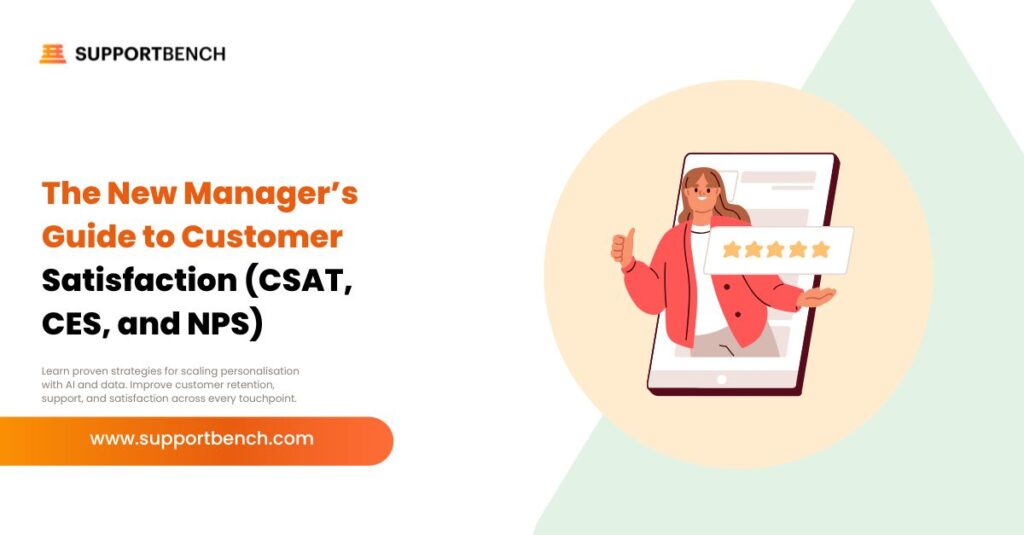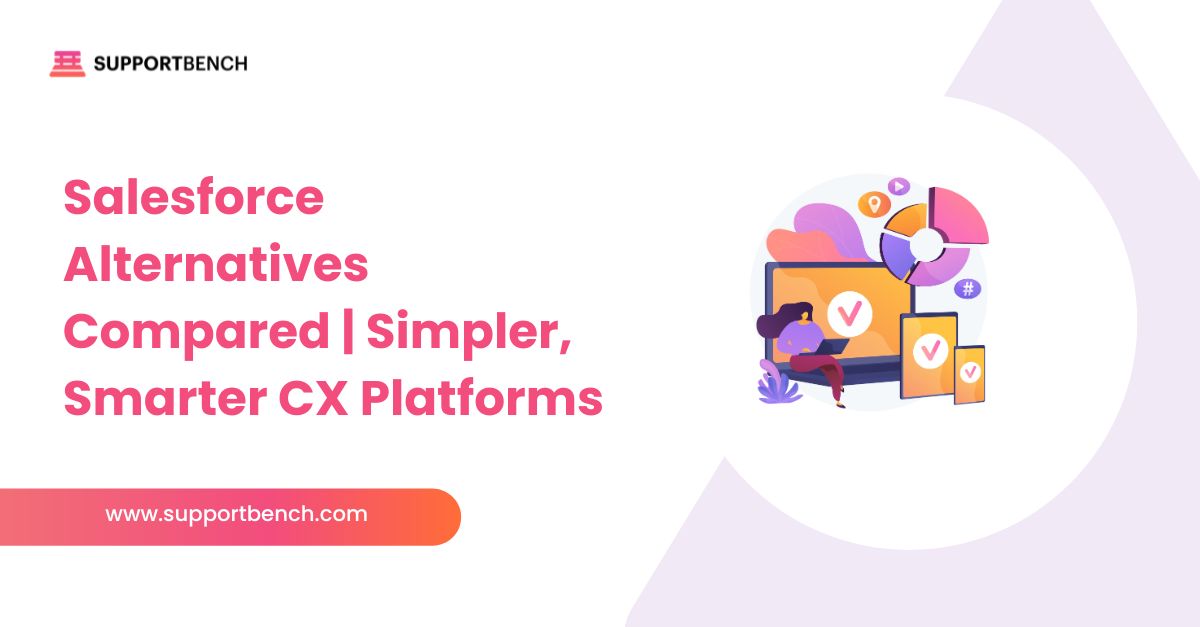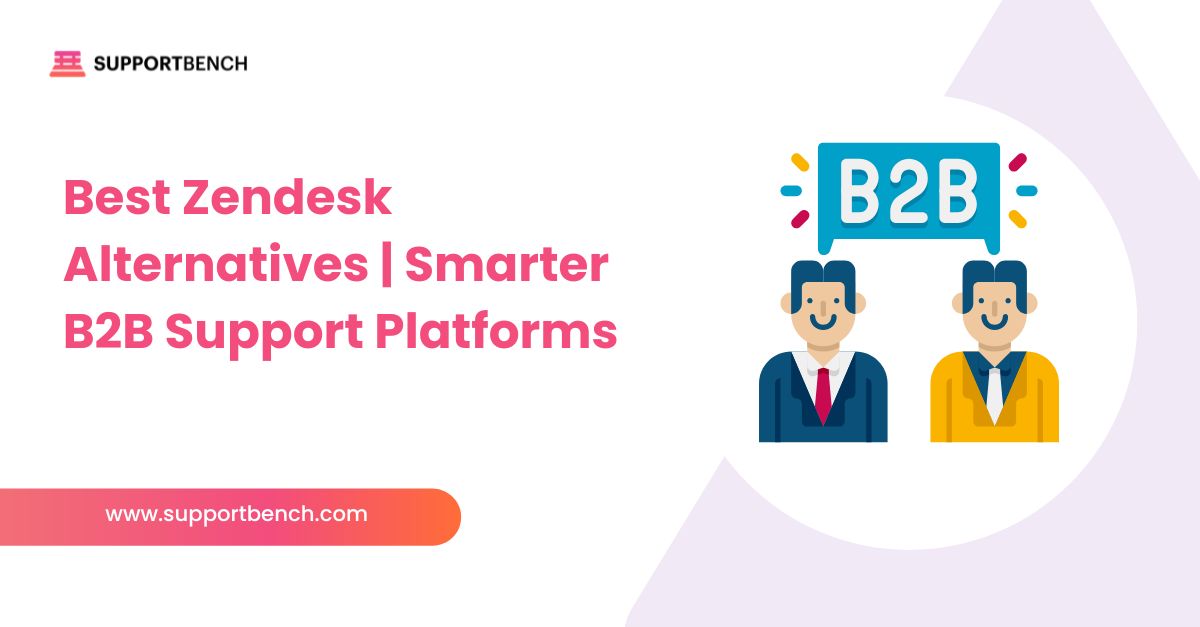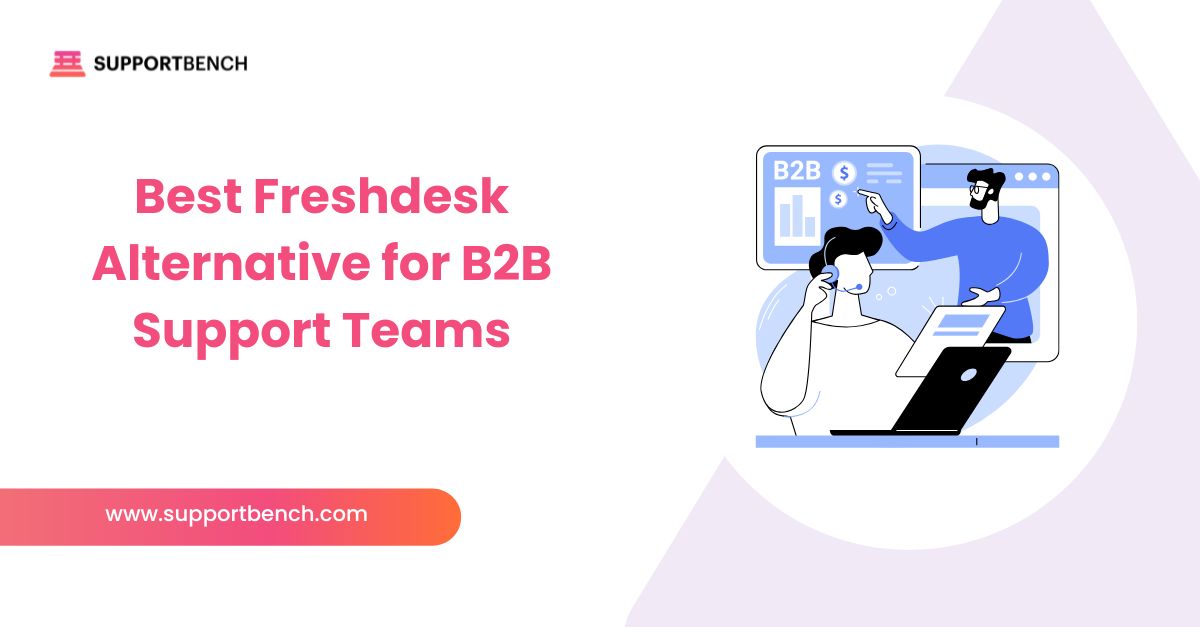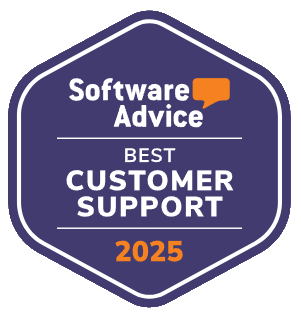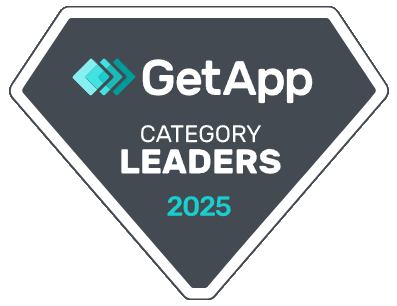As a Head of Support, VP, or Manager, you’re in a position where understanding and influencing customer perception is paramount. In the world of B2B (Business-to-Business) support, where companies provide services or products to other companies, relationships are often long-term, high-value, and complex. Here, understanding customer sentiment isn’t just a “nice-to-have”; it’s critical for retention, growth, and the overall health of the business. But how do you systematically measure something as seemingly subjective as customer happiness or loyalty?
This is where key customer experience metrics come into play. Customer Satisfaction (CSAT), Customer Effort Score (CES), and Net Promoter Score (NPS) are three of the most powerful tools in your arsenal. They provide structured ways to listen to your customers, quantify their experiences, and identify opportunities to shine. As detailed in The Ultimate Customer Support Playbook for New Managers, mastering these metrics is a cornerstone of building a truly effective and respected support organization.
This guide will demystify CSAT, CES, and NPS, explaining what they are, how to measure them, what they tell you, and how you can use them to not only improve support but also to position yourself as a customer-centric hero within your organization.
At a Glance:
- Understand Your Customer's Voice: For new support leaders, Customer Satisfaction (CSAT), Customer Effort Score (CES), and Net Promoter Score (NPS) are vital metrics for gauging customer sentiment, identifying pain points, and driving meaningful improvements in B2B support.
- Each Metric Tells a Different Story: CSAT measures satisfaction with specific interactions, CES assesses the ease of getting issues resolved, and NPS gauges overall loyalty and willingness to recommend. Using them together provides a holistic view.
- Actionable Insights Beyond Scores: While the numbers are important, the true value lies in the qualitative feedback (verbatim comments) and using these insights to take targeted actions that enhance processes, agent performance, and the overall customer experience.
- B2B Context Matters: In Business-to-Business (B2B) support, where relationships are key, these metrics should be analyzed at both contact and account levels, considering the strategic value and contractual obligations of each client.
- Leverage Technology for Measurement & Action: Utilize integrated helpdesk solutions like Supportbench or dedicated survey platforms to efficiently collect, analyze, and act upon customer feedback, turning data into a catalyst for becoming a customer-centric hero.
Why These Metrics Are Your New Best Friends
For a new support leader, actively tracking and understanding CSAT, CES, and NPS from the get-go offers several crucial advantages:
- Establish a Performance Baseline: You can’t demonstrate improvement if you don’t know your starting point. These metrics provide a clear benchmark.
- Pinpoint Areas for Improvement: Low scores or negative feedback quickly highlight friction points in your processes, agent skill gaps, or product issues surfacing through support.
- Drive a Customer-Centric Culture: Sharing these metrics (and the stories behind them) with your team helps instill a focus on the customer in everything they do.
- Make Data-Driven Decisions: Gut feelings are good, but data is better. These metrics provide concrete evidence to support your strategies and resource requests.
- Showcase Your Impact: Demonstrating measurable improvements in customer satisfaction and loyalty is a powerful way to prove your value to executive leadership.
Let’s dive into each metric.
1. Customer Satisfaction (CSAT): The “How Did We Do Today?” Metric
What it is: CSAT measures a customer’s satisfaction with a specific interaction or experience with your company, most commonly a support ticket resolution, a chat session, or a phone call. It’s a transactional metric, providing a snapshot of happiness at a particular touchpoint.
How to Measure It:
CSAT is typically measured by asking a straightforward question immediately after an interaction concludes.
- Typical Question: “How satisfied were you with the support you received today?” or “Overall, how satisfied were you with your recent interaction with our support team?”
- Scales:
- A 1-5 scale (e.g., 1 = Very Dissatisfied, 5 = Very Satisfied)
- A 1-7 scale
- Simpler scales like “Satisfied / Neutral / Dissatisfied”
- Calculation: The most common way to report CSAT is as the percentage of customers who rated their satisfaction as “satisfied” (e.g., scores of 4 and 5 on a 5-point scale).
- Formula: (Number of Satisfied Customers / Total Number of Survey Respondents) x 100 = % CSAT
- Timing: Send the survey as soon as possible after the interaction is closed (e.g., when a support ticket is marked “Resolved” or a chat ends).
What CSAT Tells You:
- Immediate feedback on the quality of individual support interactions.
- Effectiveness of your agents in resolving issues and communicating.
- Potential problems with specific processes or channels.
- Areas where agents might need more training or coaching.
Best Practices for CSAT:
- Keep it Short & Simple: A single question is often best for the core CSAT score.
- Ask at the Right Time: Promptness is key for accurate recall.
- Always Include an Open-Ended Follow-Up: This is crucial! Ask “What was the main reason for your score?” or “Is there anything else you’d like to share about your experience?” The verbatim comments are where the richest insights lie.
- Segment Your Results: Don’t just look at the overall score. Analyze CSAT by:
- Agent or team
- Support channel (email, phone, chat)
- Issue type or product
- Customer segment (e.g., B2B account tier, new vs. long-term customer)
- Set Realistic Goals: Aim for improvement rather than an arbitrary perfect score. Industry benchmarks vary, but generally, a CSAT score above 80-85% is considered good.
What Else to Track Alongside CSAT Questions:
Beyond the score, the context is vital. Ensure your survey system captures or can be linked to:
- Ticket ID / Interaction ID
- Agent who handled the interaction
- Date and time of interaction
- Issue type/category
- Time to resolution for that specific ticket
- Whether it was a First Contact Resolution (FCR)
Example CSAT Questions:
- Primary: “Overall, how satisfied were you with the support you received for ticket #12345?” (Scale: Very Dissatisfied, Dissatisfied, Neutral, Satisfied, Very Satisfied)
- Follow-up: “What was the main reason for your rating?” (Open text)
- Optional: “Was your issue fully resolved?” (Yes/No)
B2B CSAT Considerations:
In a B2B context, an individual employee of your client company is providing the feedback. While individual satisfaction is important, also consider:
- Aggregating CSAT at an Account Level: Are multiple contacts from the same key B2B account consistently reporting low satisfaction? This is a major red flag.
- Who is Responding? Is it an end-user or a key decision-maker/administrator at the client company? Their perspectives might differ.

2. Customer Effort Score (CES): The “How Easy Was It?” Metric
What it is: CES measures how much effort a customer had to put forth to get their issue resolved, their question answered, or their request fulfilled. The premise is that customers are more loyal to companies that make it easy to do business with them. Like CSAT, it’s typically a transactional metric.
How to Measure It:
CES surveys are also sent shortly after an interaction.
- Typical Question: “To what extent do you agree or disagree with the following statement: [Your Company] made it easy for me to handle my issue?”
- Scales:
- A 1-7 scale (e.g., 1 = Strongly Disagree, 7 = Strongly Agree – higher score is better)
- A 1-5 scale (similar concept)
- Sometimes phrased as “How much effort did you personally have to put forth…?” (1 = Very Low Effort, 5 = Very High Effort – lower score is better here). Ensure your scale and reporting are clear.
- Calculation: Often reported as an average score on the chosen scale, or the percentage of customers who found it “easy” (e.g., scores 5, 6, 7 on a 7-point “easy” scale).
What CES Tells You:
- Identifies friction points in your customer journey and support processes.
- Highlights areas where customers struggle (e.g., confusing IVR, difficult website navigation, repetitive requests for information).
- Strong predictor of future loyalty (low effort often means higher loyalty).
- Can indicate if agents are empowered to resolve issues efficiently.
Best Practices for CES:
- Focus on Reducing Perceived Effort: Make this your actionable goal.
- Ask About Specific Interactions: CES is most effective when tied to a particular experience.
- Dig into the “Why”: Follow up high-effort scores with an open-ended question like, “What made resolving your issue difficult?” or “What could we have done to make this easier for you?”
- Correlate with Other Data: Look at CES scores alongside data like the number of contacts it took to resolve an issue, channel switches, or time spent on hold.
What Else to Track Alongside CES Questions:
- Number of interactions for that specific issue
- Channels used (and if they had to switch channels)
- Self-service attempts before contacting support
- Time to resolution
- Open-ended comments detailing the points of effort.
Example CES Questions:
- Primary: “To what extent do you agree with the following statement: Supportbench made it easy for me to get my issue resolved.” (Scale: 1-Strongly Disagree to 7-Strongly Agree)
- Follow-up: “What, if anything, could we do to make it even easier?” (Open text)
B2B CES Considerations:
Complex B2B products or services might sometimes mean that resolving an issue is inherently more involved. The goal for B2B CES is not necessarily to make everything “one-click simple” (which might be unrealistic) but to ensure the process feels guided, supported, and efficient, without unnecessary roadblocks or frustrations for the client.
3. Net Promoter Score (NPS): The “Will You Champion Us?” Metric
What it is: NPS measures overall customer loyalty and the likelihood of a customer recommending your company, product, or service to others. Unlike CSAT and CES, NPS is typically a relational metric, reflecting the customer’s overall perception and relationship with your brand, not just a single interaction.
How to Measure It:
NPS is based on a single, standardized question.
- The “Ultimate Question”: “On a scale of 0 to 10, how likely are you to recommend [Your Company/Product/Service] to a friend, colleague, or business associate?”
- Categorization of Respondents:
- Promoters (Score 9-10): Loyal enthusiasts who will keep buying and refer others, fueling growth.
- Passives (Score 7-8): Satisfied but unenthusiastic customers who are vulnerable to competitive offerings.
- Detractors (Score 0-6): Unhappy customers who can damage your brand and impede growth through negative word-of-mouth.
- Calculation: NPS = Percentage of Promoters – Percentage of Detractors. Scores range from -100 to +100.
- Formula: ((Number of Promoters – Number of Detractors) / Total Number of Respondents) x 100 = NPS
- Timing: NPS surveys are typically sent periodically (e.g., quarterly, semi-annually, annually) or after key lifecycle milestones (e.g., after initial onboarding, after a major purchase or renewal). It’s generally not sent after every support interaction, as that can skew it towards transactional feelings.
What NPS Tells You:
- Overall customer loyalty and advocacy.
- Potential for organic growth (from Promoters).
- Risk of churn and negative word-of-mouth (from Detractors).
- Broad sentiment about your company/product – support is one of many contributing factors (along with product quality, pricing, sales experience, etc.).
Best Practices for NPS:
- Always Ask “Why?”: The most critical part of an NPS survey is the follow-up open-ended question: “What is the primary reason for your score?” This uncovers the drivers behind loyalty or dissatisfaction.
- Track Trends Over Time: A single NPS score is less meaningful than the trend. Are you improving?
- Segment Your NPS: Analyze scores by customer segment, product line, lifecycle stage, or B2B account value.
- Close the Loop:
- Detractors: Follow up quickly to understand their issues, apologize, and attempt to resolve their concerns. This can sometimes turn a Detractor into a Passive or even a Promoter.
- Promoters: Thank them for their loyalty! Consider asking for testimonials, case studies, or referrals.
- Passives: Understand what would move them to become Promoters.
- Don’t Over-Survey: Sending NPS surveys too frequently can lead to survey fatigue.
What Else to Track Alongside NPS Questions:
- The verbatim “why” comment – this is paramount.
- Customer tenure or lifecycle stage.
- Products/services used.
- Account value (for B2B).
- Correlate NPS with actual business outcomes like customer retention rates, churn rates, and upsell/cross-sell activity.
Example NPS Questions:
- Primary: “On a scale of 0 to 10, how likely are you to recommend Supportbench to another B2B support leader?” (Scale: 0-Not at all Likely to 10-Extremely Likely)
- Follow-up: “What is the main reason for your score?” (Open text)
B2B NPS Considerations:
- Who Are You Asking? In B2B, you might survey multiple contacts within a client organization. Consider whose opinion best reflects the overall account relationship (e.g., key decision-makers, project leads, daily users).
- Account-Level NPS: Calculate NPS scores for your key B2B accounts to identify at-risk clients or strong advocates.
- “Recommend our partnership”: Sometimes, phrasing for B2B might be “How likely are you to recommend partnering with [Your Company]?”
Comparing CSAT, CES, and NPS: A Quick Reference
| KPI | How to Measure | What’s a “Good” Metric (General Range) | What’s a “Bad” Metric (General Range) |
| CSAT | Post-interaction survey (e.g., “How satisfied were you?”). Scale of 1-5 or % satisfied. | >80-85% satisfied, or >4.0 on a 5-point scale. | <70-75% satisfied, or <3.5 on a 5-point scale. |
| CES | Post-interaction survey (e.g., “How easy was it to resolve your issue?”). Scale of 1-5 or 1-7 (lower score is better if asking about “effort”). | High “ease” scores (e.g., >4.0 on 5-pt “easy” scale) or low “effort” scores. | Low “ease” scores (e.g., <3.0 on 5-pt “easy” scale) or high “effort” scores. |
| NPS | Relational survey (“How likely to recommend?”). Scale of 0-10. NPS = % Promoters – % Detractors. | Positive score. >30 is good, >50 is excellent, >70 is world-class. | Negative score, or very low positive score (e.g., <10). |
Note: “Good” and “Bad” are highly contextual and vary by industry, company maturity, and specific customer base. The most important thing is to establish your own baseline and focus on trends and continuous improvement.
Beyond the Scores: The Invaluable Power of Verbatim Feedback
While CSAT, CES, and NPS provide quantifiable scores, the open-ended comments (“the why”) are where the real gold lies. These verbatim responses give you direct insight into:
- Specific pain points.
- What you’re doing well.
- Agent performance (both positive and negative).
- Product issues or feature requests.
- Process inefficiencies.
Analyzing Qualitative Data:
- Look for recurring themes and patterns in the comments.
- Categorize feedback (e.g., “agent politeness,” “speed of resolution,” “product bug,” “website difficulty”).
- Use text analytics tools if you have a high volume of feedback.

Closing the Loop
Whenever possible, especially for negative feedback or Detractor NPS scores, follow up with the customer. Acknowledging their feedback and taking action (or explaining why you can’t) can turn a negative experience around and shows you’re listening.
Choosing Your Tools: Software for Measuring Customer Sentiment
You’ll need tools to efficiently collect, manage, and analyze this feedback.
1. Integrated Helpdesk Solutions:
Many modern helpdesk platforms have built-in survey capabilities.
- Supportbench: As a B2B-focused helpdesk, Supportbench not only allows you to create and send custom surveys for CSAT, CES, and NPS, linking them directly to cases and scorecards, but it also leverages AI to offer Predictive CSAT and Predictive CES. This means you can get an early indication of potential customer dissatisfaction before they even fill out a survey, allowing for proactive intervention. Its dashboards help visualize these metrics, and results can be easily linked to cases for full context. The B2B focus ensures you can analyze feedback with account context in mind.
- Other helpdesks (e.g., Zendesk, Freshdesk, Salesforce Service Cloud): Many leading helpdesks also offer native survey tools or strong integrations with third-party survey platforms.
2. Dedicated Survey & Voice of Customer (VoC) Platforms:
These platforms often offer more advanced survey design, distribution, and analytics capabilities.
- SurveyMonkey: A very popular and versatile tool for creating all sorts of surveys, including CSAT, CES, and NPS.
- Qualtrics: An enterprise-grade experience management platform offering sophisticated VoC programs, often used by larger organizations.
- Typeform: Known for its engaging, conversational survey design, which can sometimes improve response rates.
- Delighted, AskNicely, Retently: These platforms are often more specialized in NPS and customer feedback collection, focusing on ease of use and actionable insights.
- Hotjar, FullStory (for CES context): While not survey tools, these platforms provide session recordings and heatmaps that can help you understand why customers might be finding things difficult (high effort).
Key Considerations When Choosing Software:
- Integration: How well does it integrate with your helpdesk, CRM, and other business systems? Seamless data flow is crucial.
- Ease of Use: How easy is it to design surveys, set up distribution rules, and generate reports?
- Analytics & Reporting: Can you easily segment data, track trends, and visualize results?
- Customization: Can you brand your surveys and tailor questions to your specific needs?
- Automation: Can you automate survey sending based on triggers (e.g., ticket resolved)?
- Scalability: Will the tool grow with your needs?
- Cost: Does it fit your budget?
Taking Action: Transforming Insights into Heroic Improvements
Collecting CSAT, CES, and NPS data is only the first step. The real heroism comes from using these insights to drive positive change.
- Low CSAT for a specific agent? This could indicate a need for targeted coaching, additional training on product knowledge or soft skills.
- High CES scores related to your online payment process? Time to review that workflow for simplification. Perhaps add clearer instructions or tooltips.
- NPS Detractor comments consistently mentioning a missing product feature? This is valuable, prioritized feedback to share directly with your Product team.
- Promoter comments praising a particular agent’s helpfulness? Recognize and reward that agent! Share their success story as a best practice.
Set SMART (Specific, Measurable, Achievable, Relevant, Time-bound) goals for improvement based on your findings. For example: “Improve overall CSAT from 82% to 85% within the next quarter by implementing targeted training for the three most common low-CSAT drivers.”

Your Compass for Customer-Centric Leadership
As a Head of Support, CSAT, CES, and NPS are more than just numbers; they are your compass for navigating the complex world of customer sentiment. By diligently measuring these KPIs, diving deep into the qualitative feedback, and, most importantly, taking decisive action on the insights you gain, you can systematically improve your support operations, enhance customer loyalty, and reduce churn.
This data-driven, customer-focused approach will not only benefit your customers and your team but will also clearly demonstrate your strategic value and leadership capabilities to the wider organization. Mastering these metrics is a key step on your journey to becoming a true customer support hero.


